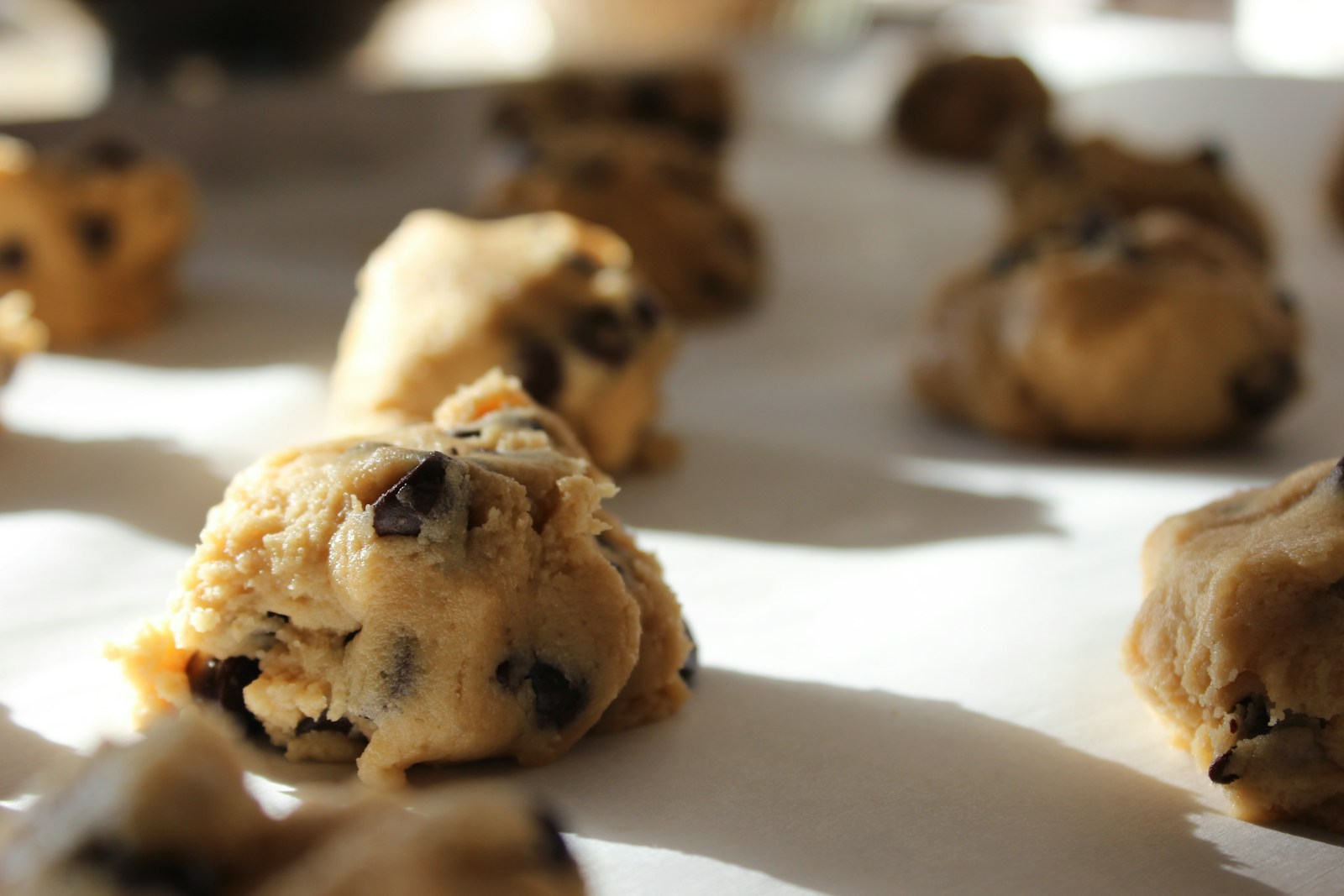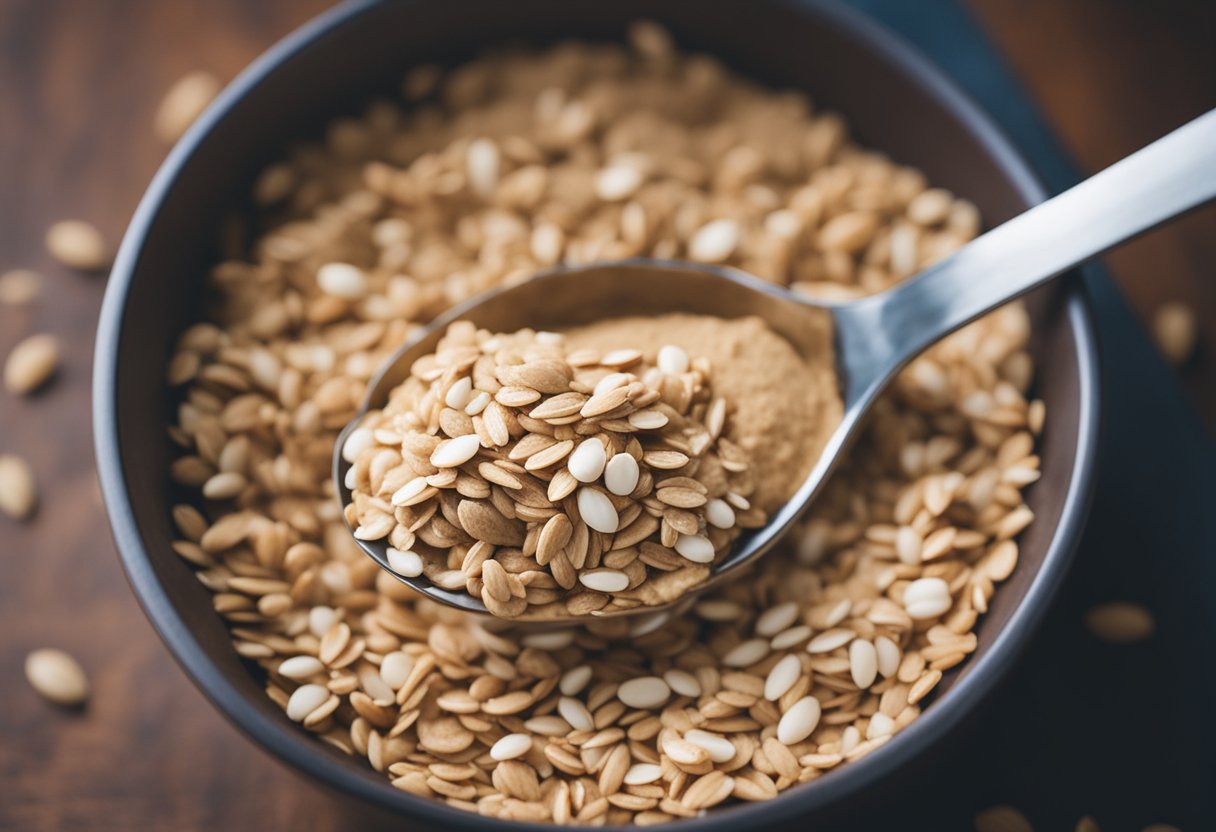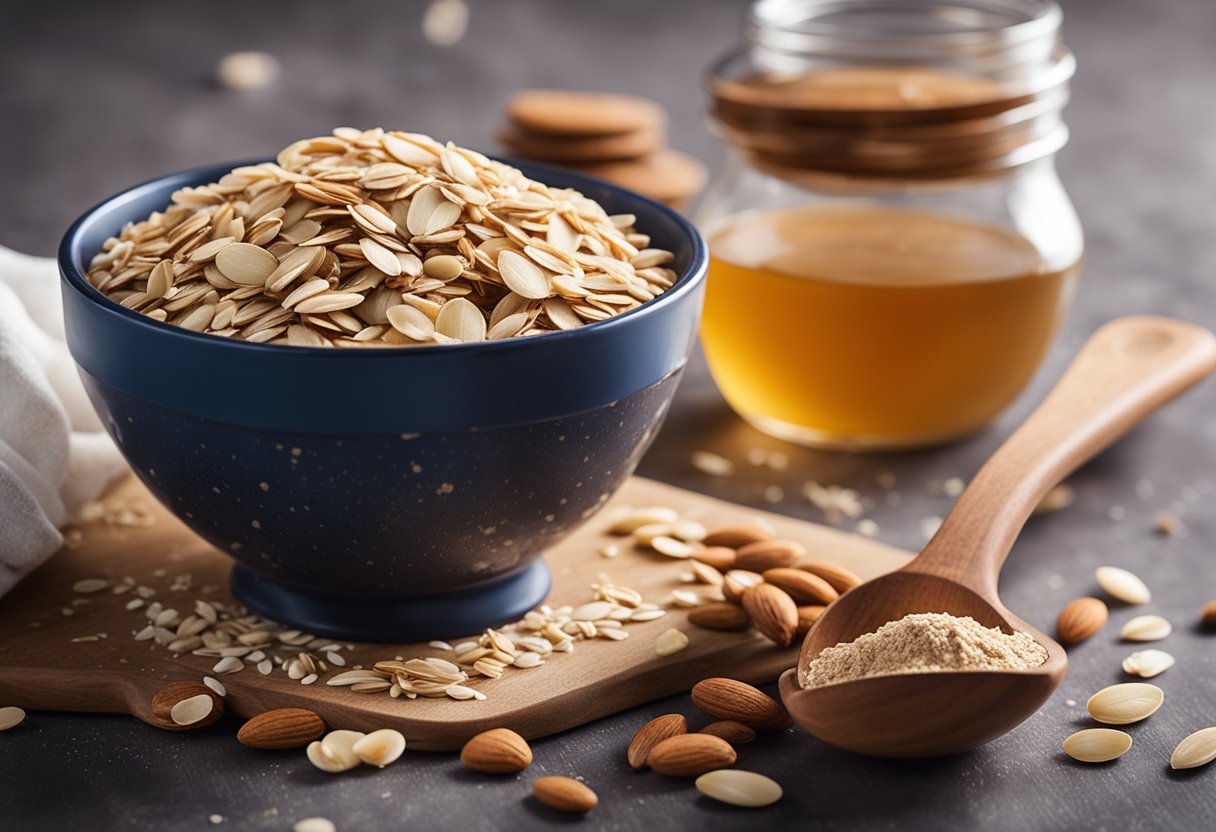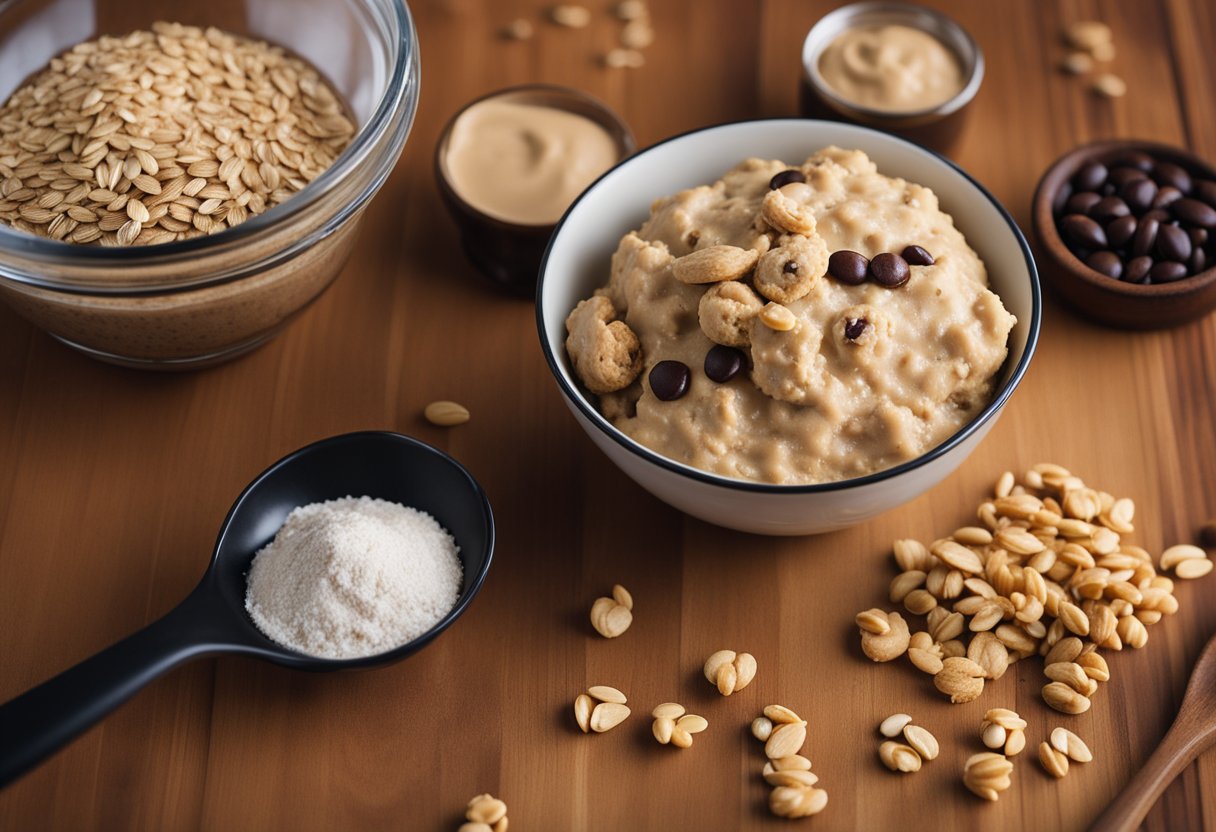Healthy Protein-Packed Cookie Dough Recipe:
Indulge Guilt-Free with Nutritious Ingredients 🍪
Indulging in dessert often brings a touch of guilt, especially when it’s as decadent as cookie dough. Thankfully, the quest for a healthier alternative has resulted in innovative recipes that allow us to indulge without compromising on nutrition. This protein-packed cookie dough recipe provides the joy of snacking on a classic treat while integrating the benefits of higher protein content, thanks to nutritious ingredients like nut butters, protein powders, and legumes.

Key Takeaways
- Protein-rich cookie dough provides a nutritious spin on a beloved classic.
- Thoughtful ingredient selection ensures the right balance of taste and health benefits.
- The recipe is customizable to fit various dietary needs and preferences without sacrificing the signature cookie dough flavor.
Essential Ingredients for Healthy Protein-Packed Cookie Dough

Creating a protein-packed cookie dough that is both healthy and delicious requires selecting the best ingredients to maintain a satisfying texture and flavor. Here’s a breakdown of the essential components for this recipe:
Protein Sources
The cornerstone of any protein-rich cookie dough is the protein source. For this recipe, protein powders are a go-to choice due to their concentrated content and versatility. Consider these options:
- Vanilla Protein Powder adds a sweet flavor.
- Chocolate Protein Powder gives a rich, cocoa twist.
- My Favorite Protein Power is Vital Protein. I love using the non-flavored one because you can add it to anything. Bonus it is also packed with collagen.
Aside from powders, here are some alternative protein-enriched ingredients such as:
- Oat Flour, which provides a hearty texture.
- Almond Flour, offering a nutty taste and extra protein.
- Garbanzo Beans, great for texture and adds protein.
Sweeteners
Choosing the right sweeteners can impart great taste while keeping the recipe healthy. Options range from natural sweeteners to sugar-free alternatives:
- Honey or Maple Syrup can be used for their natural sweetness.
- For those avoiding sugar, options like Stevia or Sugar-Free Syrup are available.
When desiring a hint of texture and sweetness, chocolate chips can be a delightful addition. Sugar-free or dark chocolate variants are preferred to maintain the health profile of the cookie dough.
Healthy Fats
Healthy fats play a crucial role in achieving the right texture and keeping you satisfied. Nut butters are key here—they provide healthy fats and enrich the flavor:
- Peanut Butter for a classic, rich taste.
- Almond Butter or Cashew Butter for a creamy, subtly sweet twist.
- Coconut (oil or shredded) offers a tropical addition to your dough.
For added creaminess, use Almond Milk, which is low-calorie and dairy-free.
Creating the Perfect Texture for Protein-Packed Cookie Dough

Achieving the right texture is crucial when making protein-packed cookie dough. The goal is to balance dry and liquid ingredients to create a dough that is thick, smooth, and satisfying without needing to bake.
Dry Ingredients for Structure
In a no-bake cookie dough, structure is key. Using almond flour and oat flour not only provides a sturdy base but also contributes a subtle nuttiness. These flours help create a dense yet soft texture that mimics traditional cookie dough. Ensure you measure accurately:
- Almond flour: 1 cup
- Oat flour: 3/4 cup
A pinch of salt enhances the dough’s flavor, balancing the sweetness. For added structure, consider using coconut flour as a substitute—it absorbs moisture and helps firm up the dough.
Liquids for Consistency
The right balance of liquid ingredients ensures the dough comes together smoothly. While traditional cookie dough often uses eggs, this recipe uses liquid alternatives to maintain a soft texture without the need for baking. Here’s what you’ll need:
- Cashew Butter (homemade or store-bought): 1/2 cup
- Non-dairy Milk (Almond or Oat milk): 2-3 tablespoons, depending on the desired consistency.
To blend the ingredients into a smooth dough, use a food processor or blender. This will help emulsify the mixture, ensuring a dough-like texture that is pliable but holds its shape.
Dietary Variations and Substitutions

This cookie dough recipe is versatile and can be adapted to suit various dietary needs, ensuring that everyone can enjoy this healthy treat.
Gluten-Free Options
For those following a gluten-free diet, replace traditional flour with a gluten-free flour blend. If using rolled oats, be sure to select certified gluten-free oats to avoid any cross-contamination.
Vegan Alternatives
For a vegan version, substitute any dairy or egg ingredients with plant-based alternatives. Use non-dairy milk (such as almond, soy, or oat milk) in place of regular milk. For the egg replacement, use flaxseed or chia seeds mixed with water as a binding agent.
Low Carb and Keto-Friendly
If you’re following a low-carb or keto lifestyle, skip traditional flours and sugars. Instead, opt for almond flour or coconut flour. Replace sugar with low-carb sweeteners like stevia or erythritol. Be sure to check that any added ingredients, like chocolate chips, are keto-friendly.
Full Protein-Packed Cookie Dough Recipe
Ingredients:
- Peanut Butter: Smooth and natural, with no added sugars. If you have allergies, almond butter, cashew butter, or tahini can be used as alternatives.
- Maple Syrup: Adds a natural sweetness. You can swap in sugar-free maple syrup if needed.
- Vanilla Protein Powder: Adds sweetness and flavor.
- Water or Milk: Use unsweetened almond milk for a creamier consistency. Add one tablespoon at a time to achieve the right texture.
- Chocolate Chips: A classic touch for that irresistible cookie dough feel. Use sugar-free or dark chocolate chips for a healthier option.
Instructions:
- Mix the Base: In a bowl, whisk together the peanut butter and maple syrup until smooth.
- Add Protein: Gradually stir in the vanilla protein powder until fully combined.
- Form the Dough: Use your hands to shape the mixture into dough. If you prefer a softer dough, add water or milk, one tablespoon at a time.
- Incorporate the Chips: Gently fold in the chocolate chips until evenly distributed.
- Enjoy: Transfer the cookie dough to a bowl and enjoy immediately, or store for later.
Storage and Serving Suggestions

To keep your cookie dough fresh, proper storage is key. It’s easy to enjoy this treat whenever the craving strikes with the right tips.
Storage Tips
For optimal freshness, store the cookie dough in an airtight container. It will stay fresh in the fridge for up to 5 days. For long-term storage, freeze the dough for up to 3 months. To prevent freezer burn, wrap the dough tightly with plastic wrap or use a reusable sealed bag before placing it in the freezer.
Serving Ideas
This cookie dough can be enjoyed straight from the fridge or freezer. For a softer texture, let it sit at room temperature for a few minutes. To elevate the experience, serve the dough in small scoops with a sprinkle of sea salt, or dip them in melted chocolate and chill until the coating hardens.
This healthy protein-packed cookie dough recipe is the perfect way to indulge in a classic treat without the guilt. Full of protein, healthy fats, and just the right amount of sweetness, it’s a snack you can feel good about enjoying. Whether you’re looking for a quick snack or a post-workout treat, this dough satisfies all your cravings.
Let me know how your Healthy Protein-Packed Cookie Dough Recipe turns out in the comment below!


